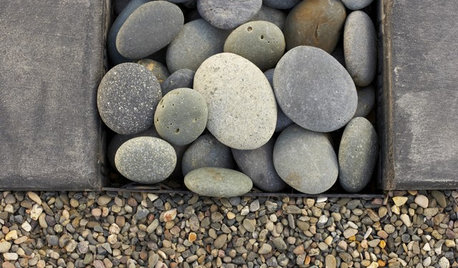Hopi Lima results
carolync1
12 years ago
Related Stories

SUMMER FRUITS AND VEGETABLESSummer Crops: How to Grow Beans
Grow your own beans for amazing variety and healthy, convenient produce all summer
Full Story
KITCHEN DESIGNKitchen of the Week: Budget-Friendly Boosts in Toronto
Blandness gets the boot as a Canadian kitchen receives a bold dose of color and custom cost-conscious storage
Full Story
CONTEMPORARY HOMESHouzz Tour: Remaking a Penthouse in a Gothic London Landmark
Step inside a renovated luxury apartment in London’s St. Pancras Chambers
Full Story
MOST POPULARHow to Reface Your Old Kitchen Cabinets
Find out what’s involved in updating your cabinets by refinishing or replacing doors and drawers
Full Story
LIGHTINGTurn Up the Party Heat — the Sultry Decorating Secret
Give your home a warm and romantic vibe with candles at the entry, lined up along a wall, floating in martini glasses and more
Full Story
ARCHITECTUREDiscover Modern Architecture's Appeal
Do modernism's 'cold' expanses make you hot under the collar? This reasoning may change your mind
Full Story
HOME OFFICESWorking at Home Together (and Apart)
One is easy. Two, not so much. Here are ways to make room for two to work at home
Full Story
TASTEMAKERSThe Seduction of Reduction
Go on a design detox for an emotional and spiritual uplift. 'The Inspired Home' shows you how
Full Story
LANDSCAPE DESIGNThe Right Stone for Your Garden Design
Gravel, pebble, cobble and paddle: Stones vary in size and shape, and have different uses in the landscape
Full Story
DECORATING GUIDESHaul These Fab Airstream Styles Home
Borrow decorating ideas from these 9 space-savvy vintage trailers to polish a small interior that stays put
Full StorySponsored






neohippie
carolync1Original Author
Related Professionals
Waterbury Landscape Contractors · Allentown Landscape Contractors · Edmond Landscape Contractors · Berkeley Heights Landscape Contractors · Bristol Landscape Contractors · Costa Mesa Landscape Contractors · Fair Lawn Landscape Contractors · Fort Worth Landscape Contractors · Soddy Daisy Landscape Contractors · Tigard Landscape Contractors · Chicago Decks, Patios & Outdoor Enclosures · Fort Lee Decks, Patios & Outdoor Enclosures · Richmond Decks, Patios & Outdoor Enclosures · Springfield Decks, Patios & Outdoor Enclosures · Tooele Decks, Patios & Outdoor Enclosures